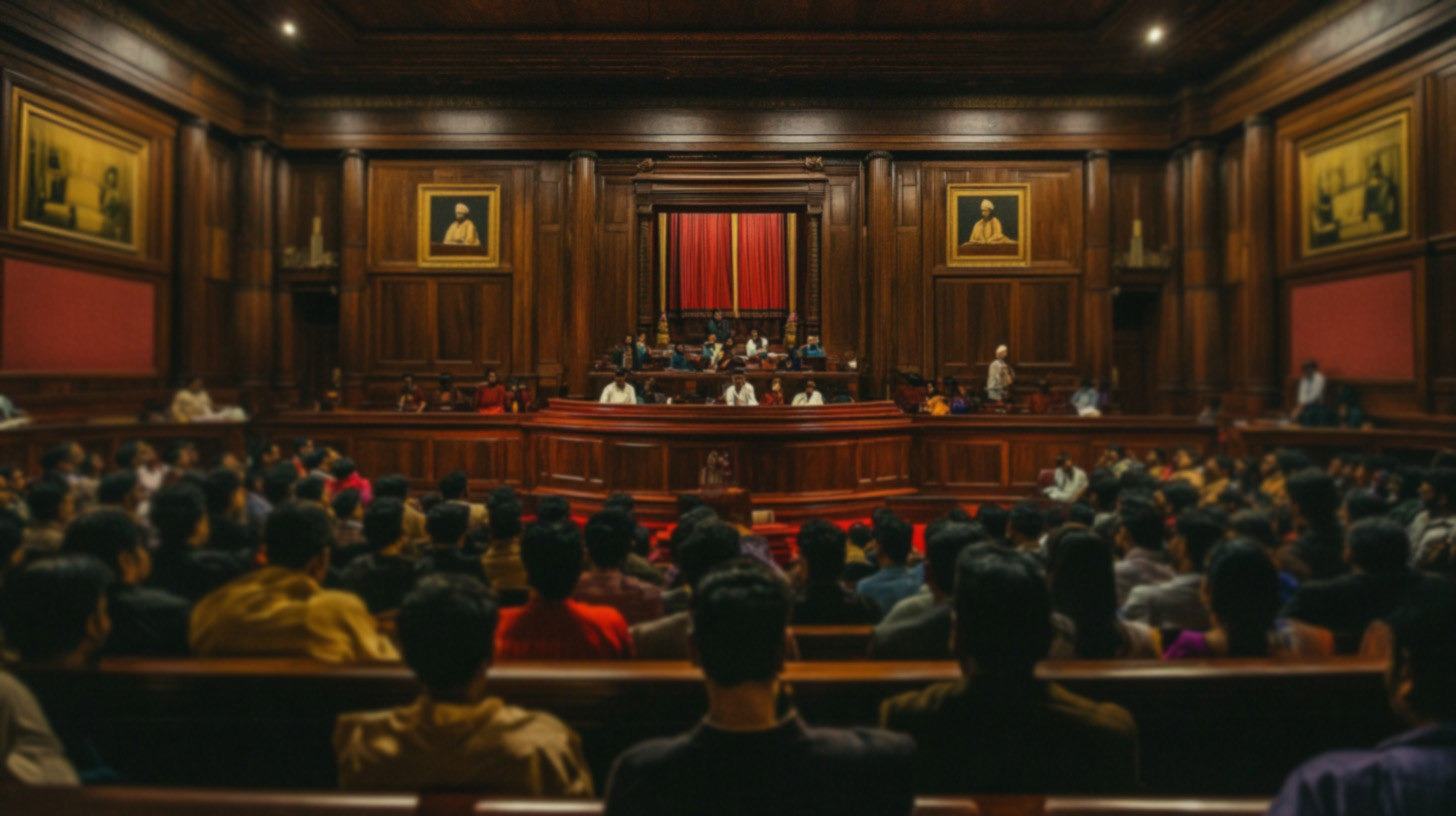Separation of powers serves as the backbone of a well-functioning democratic structure. It ensures that governance is distributed among distinct branches to prevent abuse of authority.
In India, the principle finds expression through various constitutional provisions, with Article 50 under the Directive Principles of State Policy focusing explicitly on keeping the judiciary free from executive control.
Article 50 advocates for a structural and functional distinction between the judiciary and the executive in public services. Its role lies in sustaining judicial independence, a key condition for upholding constitutionalism, protecting individual rights, and ensuring the rule of law.
Constitutional Text and Legislative Background
Article 50 of the Indian Constitution states:
“The State shall take steps to separate the judiciary from the executive in the public services of the State.”
As part of the Directive Principles, it is not enforceable by any court but serves as a directive to be followed in governance.
The origins trace back to Draft Article 39-A, which was debated during the Constituent Assembly discussions on 24 and 25 November 1948. Framers like Dr. B.R. Ambedkar emphasized the necessity of insulating judicial officers from administrative influence.
Concerns over impartial adjudication and justice delivery were central to this debate.
Demand for judicial independence had gained momentum during Indian nationalist movements, beginning with Congress sessions in 1885, where leaders expressed disapproval of executive domination over judiciary.
An initial proposal sought to implement separation within three years of adoption but was eventually dropped, possibly due to administrative and logistical constraints in post-colonial India.
Purpose and Scope of Article 50
Article 50 reflects a constitutional aspiration designed to uphold the structural integrity of a democratic framework. The separation of judiciary and executive functions has long been recognized as essential for impartial governance.
In the Indian context, this principle safeguards judicial officers from administrative subjugation and ensures decisions are guided solely by legal merit. The focus lies on fortifying judicial conduct, free from the pressures or directives of the executive branch.
- Judicial officers, including magistrates and judges, must be able to adjudicate without fear of external repercussions or rewards.
- Removing executive control eliminates avenues for favoritism, manipulation, or political pressure in court proceedings.
- Most interference has historically occurred in the domain of the subordinate judiciary. Article 50 addresses the day-to-day vulnerabilities of civil judges, magistrates, and tribunal officers.
Public services in states often involve judicial officers who are at risk of being influenced through administrative authority.
- Avoiding executive dominance in hiring ensures merit-based selection.
- Independent mechanisms reduce the scope for manipulation or reward-based mobility.
- Preventing executive-led inquiries or penalties protects judicial objectivity.
Even though Article 50 is part of the Directive Principles of State Policy and lacks enforceability in court, it exerts significant influence on governance norms. The language serves not only as an ideal but also as a blueprint for institutional behavior expected of the State.
Its constitutional presence continues to shape legal reform discussions and inspire systemic changes aimed at safeguarding judicial credibility.
Importance of Judicial Independence
In any constitutional democracy, the separation of powers functions effectively only when the judiciary remains free from external influences. Independence of the judiciary ensures that laws are interpreted without bias and constitutional principles are upheld consistently.
A judiciary that functions without interference is better positioned to serve the public interest, resolve disputes impartially, and enforce accountability on the legislature and executive.
To understand its vital role, consider the following key contributions and associated risks when autonomy is undermined:
- Guarantees that citizens can approach courts to seek justice for violations of fundamental rights.
- Ensures that no branch of government exceeds its authority or bypasses constitutional limitations.
- Provides objective application of legal principles, free of political or social bias.
- Reviews actions of the executive and legislature, offering remedies when they violate legal or constitutional norms.
Courts play an indispensable role in preserving the moral and legal compass of a nation. In the absence of autonomy, interference becomes frequent, leading to biased decisions or delayed justice. Judges may feel compelled to act in favor of those who control their appointment or career progression, leading to an erosion of public faith.
- Threatens to influence outcomes, especially in cases involving powerful entities or individuals.
- Public perception deteriorates when courts are seen as extensions of the ruling establishment.
- Judges constrained by administrative control may fail to act courageously or independently.
- Decisions swayed by non-legal considerations damage legal consistency and equity.
Implementation Challenges
Establishing a clear separation between the judiciary and the executive faces substantial hurdles in practice.
While Article 50 provides a directive, operational realities have created persistent tensions and areas of overlap.
On one hand, judicial overreach invites criticism about boundaries being crossed. On the other hand, executive interference threatens the autonomy necessary for a fair and impartial judiciary.

Judicial Overreach
Judicial overreach refers to instances where courts extend their influence into policy matters and administrative decisions traditionally assigned to the executive.
While courts often intervene with the intent to address inaction, uphold rights, or advance justice, such actions can disrupt the constitutional balance of power.
- Courts issuing binding orders on administrative policy, such as environmental regulation or public health management.
- Instances where judicial pronouncements resemble legislative or executive functions, bypassing democratic deliberation.
- Frequent intervention in governance dilutes the clarity of roles and weakens institutional accountability.
Judicial activism has sparked ongoing debate about the legitimacy and limits of judicial power. While some hail it as necessary to correct executive failures, others warn it may lead to undermining democratic accountability.
Executive Interference
Interference by the executive in judicial administration directly contradicts the principle of judicial independence.
Appointments, promotions, and transfers of judges have become focal points of contention, exposing the structural vulnerabilities of the system.
- Pending recommendations and selective approvals disrupt judicial functioning and create case backlogs.
- The influence of ruling parties or government interests in selecting judges for key positions undermines neutrality.
- Lack of transparency and internal dissent within the judiciary has prompted calls for reform.
- Absence of clear criteria creates an environment vulnerable to pressure and patronage.
Reform proposals have included institutionalizing an independent appointment body, laying down strict timelines for executive response to recommendations, and enhancing transparency in the Collegium’s decision-making process. Despite these proposals, progress remains slow and inconsistent.
View this post on Instagram
Summary
Article 50 serves as a foundational directive that reinforces the necessity of judicial independence in democratic India. While non-justiciable, its influence permeates institutional norms and governance ideals.
Despite multiple efforts, full separation remains aspirational due to lingering administrative practices and systemic inertia. Issues such as politicization, opacity in appointments, and judicial overreach illustrate the fragile balance between independence and institutional coherence.

